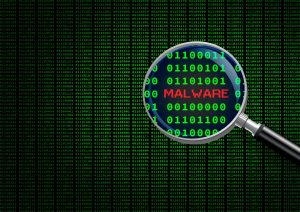
A new self-replicating worm named Shai-Hulud has emerged in the npm ecosystem, infecting hundreds of open-source packages and stealing developer credentials.
The Shai-Hulud worm – named after the giant sandworms of Dune – has wormed its way into the Node.js ecosystem. First detected in mid-September 2025, it has already infected hundreds of npm packages, quietly stealing developer credentials and inserting malicious code with minimal human intervention. In one early incident, the widely used @ctrl/tinycolor library (over 2.2 million weekly downloads) was compromised, illustrating how quickly the threat can spread through interconnected software projects. Unlike a standard malware that requires manual triggers, Shai-Hulud propagates automatically once inside a development pipeline, making it a true software worm that can burrow through supply chains on its own.
What is the Shai-Hulud Worm?
Shai-Hulud is a newly discovered self-replicating malware targeting open-source npm packages. Security analysts note that it “has spread across hundreds of open source software packages, stealing credentials and infecting other components” with very little direct attacker input. In practice, this means the worm infects a developer’s environment and uses it as a launchpad. ReversingLabs explains that once Shai-Hulud gains control of an npm developer account, it automatically finds all packages that developer maintains. It then creates new releases of each package with the worm’s code injected. Each of these malicious updates includes a post-install script so that the malware executes on every install, “repeated in perpetuity” as it hops from project to project. In short, Shai-Hulud continuously replicates and spreads itself through the software supply chain without further human intervention.
How the Worm Propagates
Shai-Hulud infects environments through a multi-stage process. In broad terms, security researchers describe the attack chain as follows:
- Initial Infection & Scanning: When a developer installs a compromised npm package, the worm’s code runs a post-install script to scan the host environment for secrets. It looks for sensitive data such as
.npmrcfiles (npm tokens) and environment variables containing GitHub Personal Access Tokens or cloud API keys for AWS, GCP, Azure, etc.. It may also invoke tools like TruffleHog to search code for hidden secrets. - Exfiltration of Secrets: Any credentials found are sent back to the attacker. In fact, Shai-Hulud even creates a public GitHub repository named “Shai-Hulud” under the victim’s account and commits the stolen secrets there in plain view. This exposes system details, configuration data, and tokens directly to the attackers.
- Automatic Package Hijacking: Using any stolen npm authentication tokens, the worm logs into the npm registry as the compromised developer. It enumerates all packages the developer maintains, then automatically publishes new versions of them with the malicious code injected. This means every published project becomes a new infection vector once its maintainer is compromised.
- Spreading Further: The worm also targets private GitHub repositories. It can flip a private repo to public or push branches named “shai-hulud” to leak any hardcoded secrets and source code. Additionally, Shai-Hulud may drop rogue GitHub Actions workflows in repositories to harvest more secrets and exfiltrate them via webhooks. Each of these steps turns trusted development resources into means of further infection.
Taken together, these tactics let Shai-Hulud “execute the malicious bundle” on every install and then propagate to new targets in an automated loop.
Impact and Scope of the Attack
The Shai-Hulud campaign has hit a large and diverse slice of the developer community. ReversingLabs reports that “hundreds of NPM packages” have already been affected, and its analysis identified on the order of ~700 likely-compromised repositories. An independent assessment found 500+ packages impacted as of mid-September. Because npm is the world’s largest software registry – with over 800,000 packages and millions of daily downloads – any widespread infection poses a systemic risk.
In practice, the worm’s reach includes a wide variety of projects and organizations. Companies of all sizes rely on npm libraries, so affected maintainers include startup CTOs, outsourced software teams, AI research developers, even security vendors and student projects. For example, one compromised library, @ctrl/tinycolor, alone has millions of weekly users. In short, any business that uses Node.js packages is potentially exposed.
The business implications are serious. Stolen tokens and keys give attackers direct access to critical systems. As Palo Alto Networks warns, harvested credentials could enable attackers to infiltrate cloud environments (AWS, Azure, GCP) and carry out data theft, ransomware deployment, cryptomining or even mass deletion of resources. Leaked SSH keys or personal tokens could also allow lateral movement within corporate networks. In effect, Shai-Hulud turns open-source trust into a backdoor: an infected npm package used in development could silently compromise entire engineering pipelines. With secrets exposed, the next steps of the attackers (whether stealing IP or launching further attacks) are unknown.
This campaign follows a string of recent supply-chain incidents. Earlier in September 2025, threat actors had already injected cryptocurrency-stealing malware into popular npm packages, and in late August a separate “Nx/S1ngularity” breach stole thousands of developer credentials and exposed many private repos. ReversingLabs and others note that Shai-Hulud appears to build on those breaches – for instance, the likely initial infection point was a package called rxnt-authentication, possibly hit via social engineering in a way similar to the Nx attacks. However, unlike those attacks, Shai-Hulud’s fully automated, worm-like spread makes it uniquely dangerous and hard to contain.
Why Businesses Should Care
For companies, Shai-Hulud is more than a developer headache – it’s a direct threat to operations and data security. Any business that uses Node.js (and hence npm) in its products or services could be affected. The list of impacted parties already includes financial-tech teams, healthcare app developers, gaming companies, government contractors – essentially anyone building software with npm libraries.
The stolen secrets can be especially damaging. For example, an attacker who obtains AWS access keys could exfiltrate customer data from S3 buckets or spin up resources for further attacks. Stolen GitHub tokens might give unauthorized access to proprietary source code. Even credentials for CI/CD tools could allow injection of malicious code into future builds. The attack is “noisier and more indiscriminate” than past ones, meaning businesses may not even know they were hit until unusual activity (like secret rotations or takedowns) occurs.
In short, Shai-Hulud underlines a critical lesson: software supply chain security is now a boardroom issue. A single compromised open-source library can cascade into a company-wide breach. Business leaders should recognize that today’s trusted code dependencies may harbor hidden dangers, and that developer accounts and tokens are just as sensitive as traditional credentials.
Defenses and Mitigations
Security experts emphasize that swift, comprehensive action is needed to contain Shai-Hulud. Key recommendations include:
- Rotate All Credentials Immediately: Assume any developer tokens or keys on infected machines have been stolen. Rotate npm tokens, GitHub personal access tokens, SSH keys, and all cloud/third-party service secrets without delay. Treat every secret on a dev workstation as suspect.
- Audit and Update Dependencies: Use tools like
npm auditand review your project’spackage-lock.json/yarn.lockto identify any compromised versions of packages. Remove or update any tainted dependencies. Hijacked npm packages identified by maintainers are already being unpublished or blocked, so ensure your projects don’t pull those versions. - Review Developer Accounts: Examine your team’s GitHub and npm accounts for signs of compromise. Look for any new repositories or branches named “shai-hulud” or “Shai-Hulud Migration”. These were indicators observed by analysts. Also check for unexpected changes to GitHub Actions or CI workflows that could be siphoning data.
- Enforce Strong Access Controls: Enable Multi-Factor Authentication (MFA) on all developer accounts (especially npm and GitHub) immediately. MFA can help prevent stolen credentials from being used. Also ensure developers use least-privilege access tokens rather than broad account tokens where possible.
- Coordinate Takedown Efforts: Report and remove any malicious package versions to npm’s security team and relevant open-source maintainers. ReversingLabs notes that the worm’s propagation can be stalled if malicious packages are quickly taken down, “cornering” the worm before it spreads further. Rotate secrets in any environment where compromised packages were present.
- Monitor and Educate: Keep an eye on developer machines and CI systems for unusual outbound connections or downloads. Ensure your security team is alerted to any Shai-Hulud indicators. Educate developers about this attack and advise them not to disable security tools or ignore warnings.
These steps combine standard incident response (rotate, remove, patch) with supply-chain specific actions (dependency scanning, account review). The critical point is urgency: the worm spreads automatically, so even a short delay can allow more projects to become infected. Security teams should treat Shai-Hulud like a critical malware outbreak – isolate affected systems, block known bad packages, and verify that no rogue code has been merged anywhere.
Conclusion
Shai-Hulud represents a new high-water mark for npm supply-chain attacks. By autonomously leeching secrets and re-publishing code, this worm shows how rapidly open-source dependencies can become attack vectors for even non-sophisticated threat actors. For businesses, the rise of Shai-Hulud is a stark reminder that software dependencies are part of the attack surface. Organizations must strengthen developer security practices, monitor for anomalous package updates, and be prepared to act quickly.
In practical terms, that means proactively rotating keys, scrubbing projects of infected libraries, and tightening access controls immediately. As experts warn, if the security community moves fast—removing malicious packages and rotating secrets—the worm’s chain reaction can be broken. The good news is that with vigilant maintenance of the supply chain, Shai-Hulud’s spread can be slowed. The bad news is that, until it is fully contained, any business using npm is potentially at risk. This episode should galvanize organizations to review their open-source trust policies and reinforce defenses around developer accounts and code pipelines.




